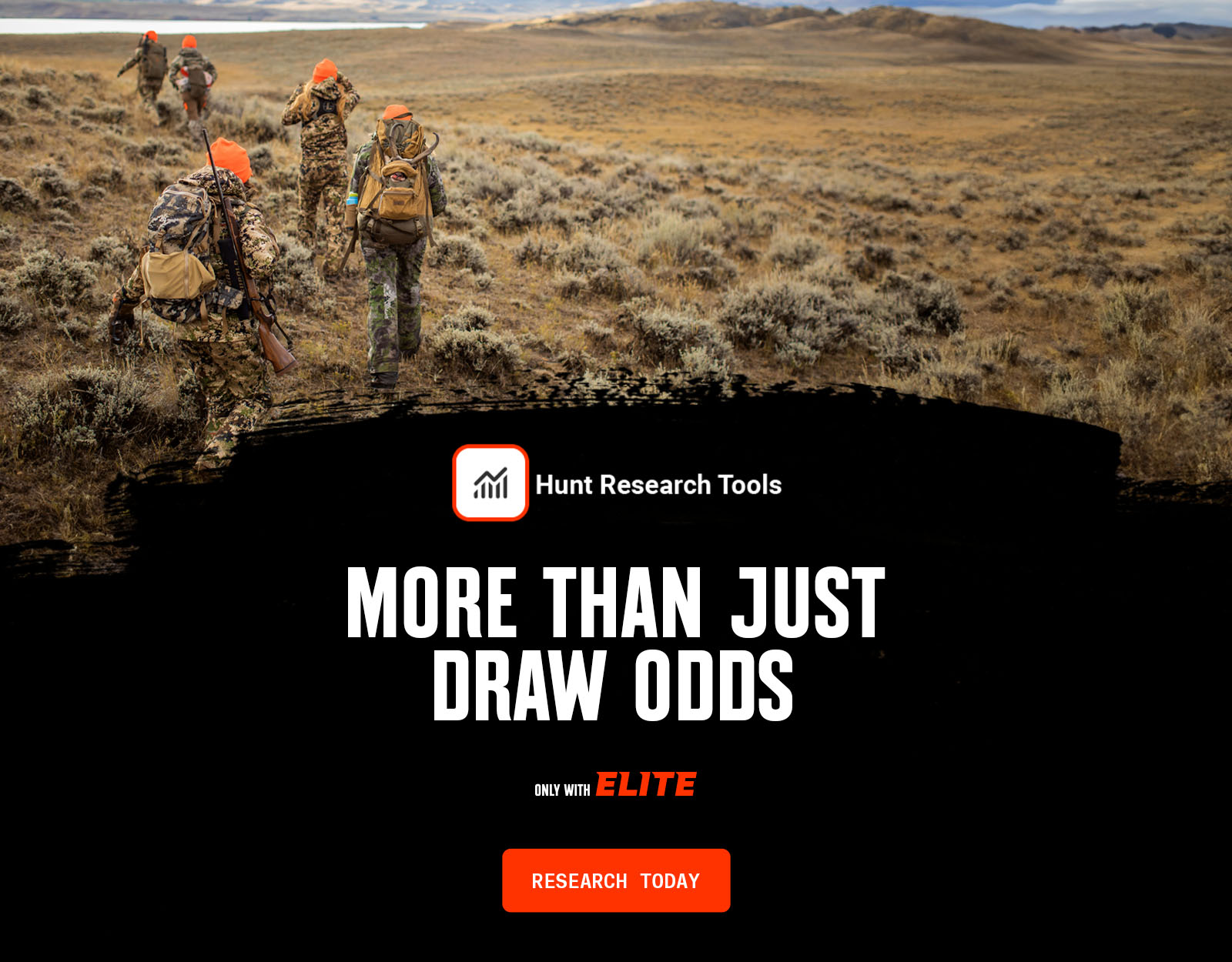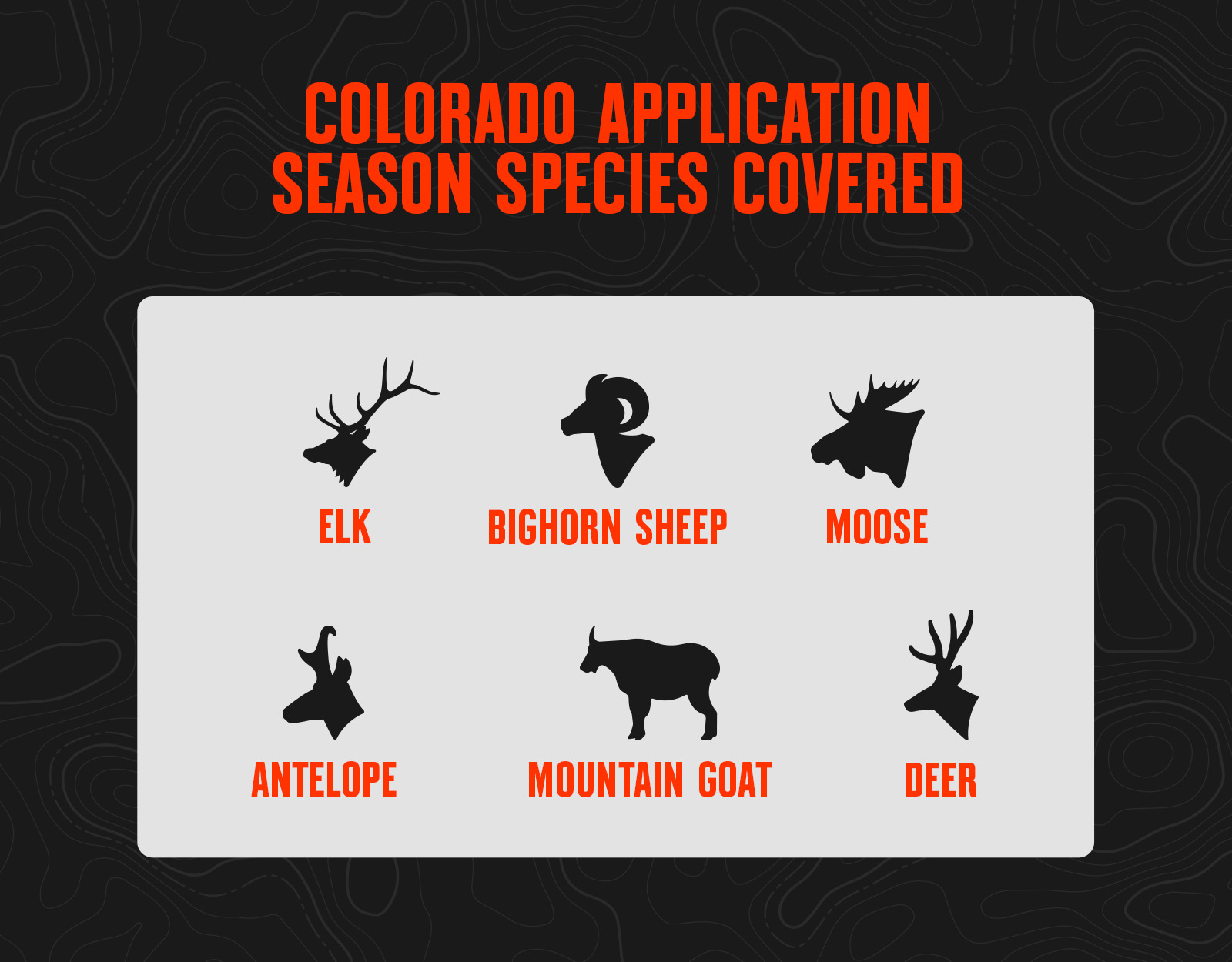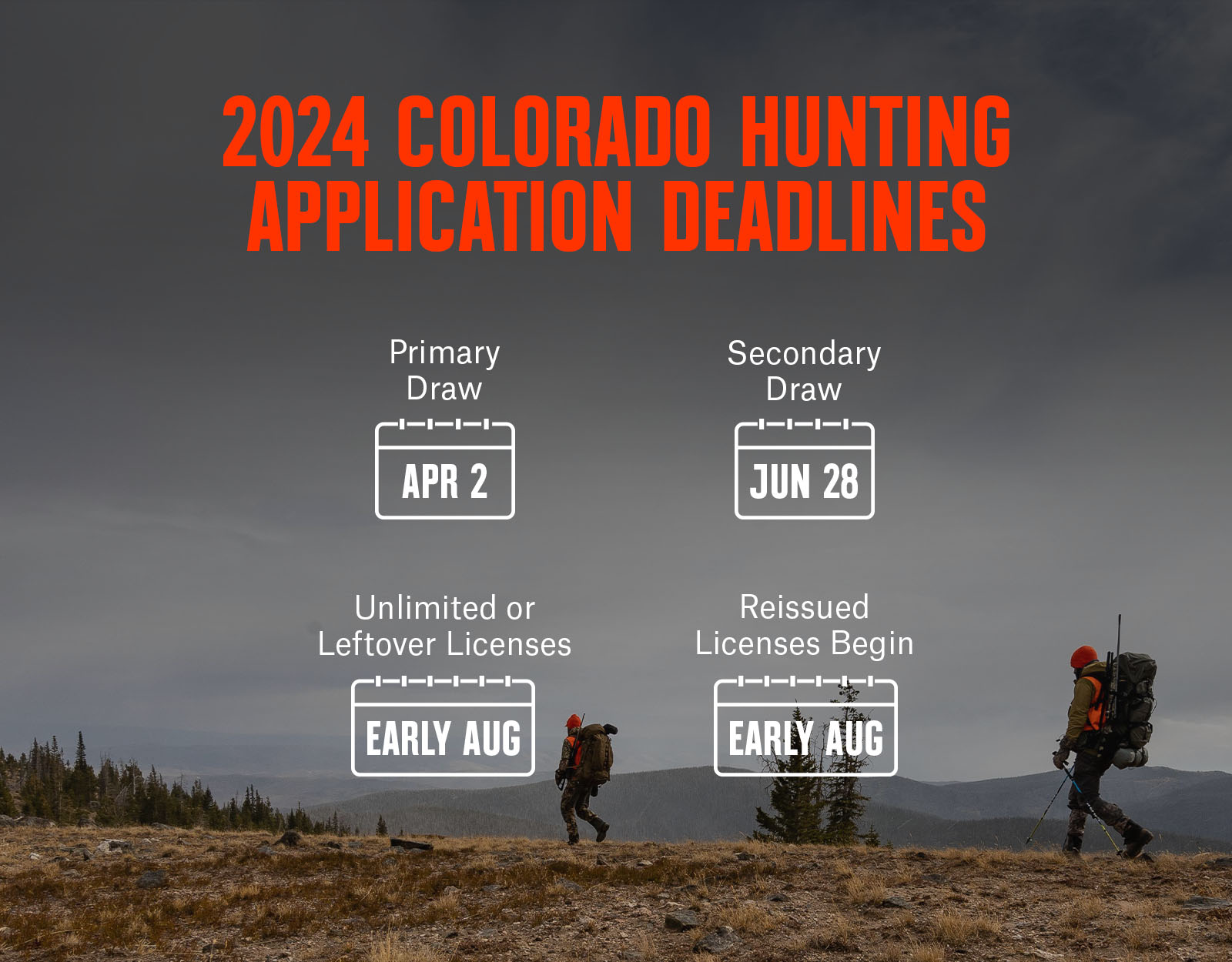Colorado: 2024 Hunting Application Details
Another Western state that tops the bucket lists of many hunters, Colorado leads the way for opportunity elk hunts with true over-the-counter tag options for archery as well as multiple rifle seasons. Colorado issues two sets of regulations–one for big game (antelope, bear, deer, elk, and moose) and a separate one for sheep and goat. Be sure to obtain the correct version for your hunting plans from Colorado Parks and Wildlife.
Mule Deer tags hunts are all issued via the drawing, but Colorado is known for its trophy deer genetics and generally healthy herd numbers making it a must-apply-for state if you are a mule deer enthusiast. Because Colorado uses a pure Preference Point drawing system, it can be a bit easier to plan and predict draw success compared to other states. But expect point creep to continue year over year—especially for the higher demand hunts that take more points to draw.

The Colorado big game application period begins around March 1, 2024, and ends April 2, 2024 with draw results available by mid-May (elk, deer, antelope, moose). Draw results for sheep and goat are released mid-April.
Hunters may apply for tags with Colorado Parks and Wildlife here.
Huntin’ Fool’s Colorado page is an excellent, updated resource for ongoing Colorado draw changes.

New in 2024 From Huntin’ Fool
- The Colorado Parks & Wildlife Commission slipped in a reduction to the non-resident quota in May of last year to all non-high demand hunt codes from 65% resident/35% non-resident to 75% resident/25% non-resident. Draw odds for most hunts will be affected by this new change for 2024.
- Unit 43 deer, elk, and bear will be split into two separate units, 43 and 431.
- Unit 74 early rifle deer hunt will have more concise boundaries. The hunt area now will be above 11,000’.
- Mount Evans was renamed to Mount Blue Sky, so G4 and S3 will have that name change for the area.
- Non-resident black bear licenses were increased from $112.34 to $251.75 because the Commission felt that the reduction in price to $100 in 2019 did not increase harvest enough to justify the reduced price.
- Northwestern elk units 3, 4, 5, 11, 12, 13, 14, 23, 24, 131, 211, 214, 231,
- 301, and 441 have all been moved to a draw for antlered elk for second and third rifle for a two-year period to address low bull to cow ratios stemming from the 2022/2023 elevated winter mortality.
- An additional archery ram season was added to S32 this year for non-residents. S74 rifle was also added to the non-resident Rocky Mountain bighorn ram draw, while S09 archery, S49 archery, and S44 rifle were taken out of the nonresident application pool for 2024.
- G06 added one non-resident mountain goat rifle tag for 2024.
- G12 lost three tags for non-resident rifle mountain goat for 2024.
- Unit 66 was added to available cow moose hunts for non-residents.
Colorado Draw Process FAQs
Application Dates and Deadlines: Huntin’ Fool lines out Colorado dates and deadlines.
Free for onX Elite members, Hunt Reminder’s Colorado page is also an excellent resource for timely application season reminders.
Hunting license and species costs for tags usually include:
- Application Fee
- Hunting License Fee to apply (usually need a qualifying license before you can apply)
- Species Fee (This is what you pay for the animal you want to hunt. Some you pay upfront at application, some you pay for once you get the tag.)
- Points-Only fee (fees for people just buying points and not actually applying for a hunt)

Point System
For elk, deer, and antelope, Colorado uses a Preference Point system:
- Preference Points are like a place in line: first in, first out. The applicants with the most Preference Points draw before those with less.
- If you apply for and are unsuccessful drawing your first choice limited license, you’ll receive an additional Preference Point for future drawings.
- Applicants may apply for Preference Points only during the primary application window that begins in early March, but you must first buy a qualifying license.
- Preference Points are considered for your first choice only. If you draw your first choice for a species and it is a limited license, your Preference Points are purged back to zero.
- If nonresidents fail to apply or buy a Preference Point for a particular species in 10 consecutive years, they will lose all accumulated Preference Points for that species.
For moose, sheep, and mountain goat, Colorado uses a Preference Point + Weighted Point system:
- Effectively, you must accumulate the maximum of three Preference Points before you have any chance to draw a tag. So if you’re new, you will not have any chance for three years.
- After you have three Preference Points, you accumulate Weighted Points. Weighted Points are a fancy way to effectively implement Bonus Points in an otherwise random drawing.
- Participating in the Weighted Point program is now optional. Once you have three Preference Points, you can opt out of paying the additional fee ($100 for nonresidents, $50 for residents) to accumulate Weighted Points.
- There is no Point System for desert bighorn sheep; the very few available tags in Colorado are issued randomly.
- Preference Points are considered for your first choice only. If you draw your first choice for a species and it is a limited license, your Preference Points are purged back to zero.
- If nonresidents fail to apply or buy a Preference Point for a particular species in 10 consecutive years, they will lose all accumulated Preference Points for that species.
To help increase your success, we’re adding new benefits to your Elite subscription—including access to Toprut.




